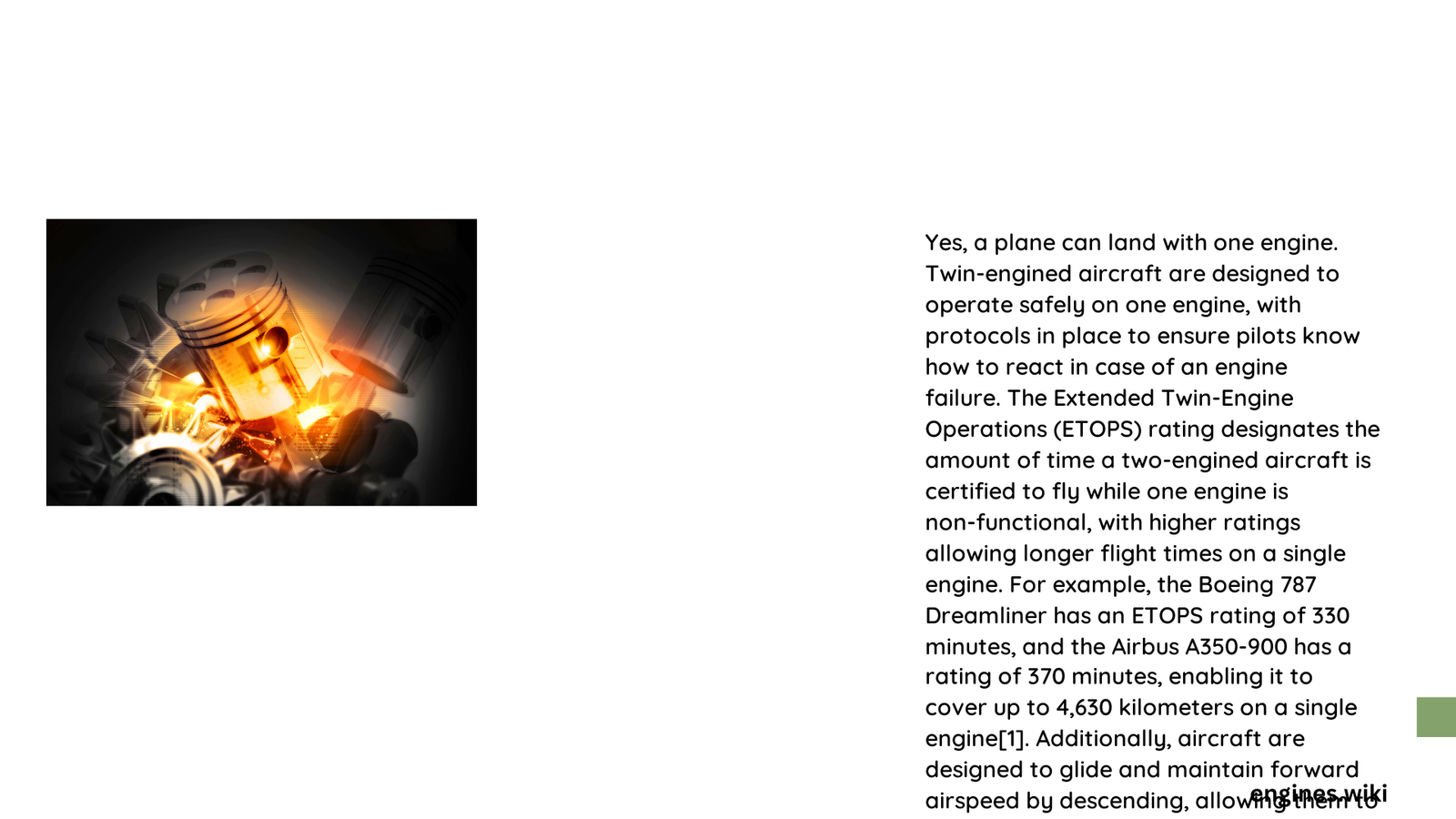Modern multi-engine aircraft are engineered with remarkable redundancy and safety mechanisms that enable pilots to execute controlled landings even when one engine fails. Through advanced aerodynamic design, comprehensive training protocols, and precise pilot techniques, commercial and private aircraft can successfully navigate and land safely with a single operational engine, minimizing risks and ensuring passenger protection.\n\n## What Happens When an Aircraft Loses an Engine?\n\nMulti-engine aircraft are specifically designed with redundant power systems that allow controlled flight and landing in case of an engine failure. The key factors determining successful single-engine landing include:\n\n### Can Pilots Maintain Aircraft Control?\n\n- Rudder Control: Counteract yaw and maintain directional stability\n- Aileron Management: Balance roll tendencies\n- Precise Speed Management: Maintain optimal approach speed\n\n### What Performance Metrics Matter?\n\n| Performance Factor | Impact on Landing |\n|——————-|——————-|\n| Airspeed | Determines glide distance and control |\n| Aircraft Weight | Influences climb and descent capabilities |\n| Wind Conditions | Affects approach and landing stability |\n\n## How Do Pilots Prepare for Single-Engine Scenarios?\n\nProfessional pilots undergo extensive training to handle engine failures, including:\n\n1. Emergency Procedure Memorization\n – Immediate engine feathering\n – Rudder and aileron correction techniques\n – Communication with air traffic control\n\n2. Systematic Approach\n – Maintain best rate-of-climb speed\n – Configure aircraft for minimal drag\n – Select appropriate landing site\n\n### What Technical Capabilities Enable Safe Landing?\n\nModern multi-engine aircraft incorporate several technical features:\n\n- Asymmetric thrust management systems\n- Enhanced stability control mechanisms\n- Redundant hydraulic and electrical systems\n\n## Can All Aircraft Land Safely with One Engine?\n\nNot all aircraft have identical capabilities. Factors influencing single-engine landing success include:\n\n- Aircraft Design: Twin-engine vs. multi-engine configurations\n- Engine Placement: Wing-mounted vs. tail-mounted engines\n- Pilot Training Level: Advanced certification requirements\n\n### Statistical Insights\n\n- Approximately 95% of multi-engine aircraft emergencies result in successful landings\n- Professional pilots undergo rigorous simulation training for engine failure scenarios\n- Modern aircraft have significantly reduced single-engine failure risks\n\n## Critical Considerations for Safe Landing\n\n### How Do Environmental Factors Impact Landing?\n\n- Runway Length: Sufficient distance for controlled approach\n- Altitude: Higher elevations reduce engine performance\n- Weather Conditions: Wind speed and direction critical\n\n### Pilot Decision-Making Process\n\n1. Assess immediate aircraft condition\n2. Determine nearest suitable landing site\n3. Execute systematic emergency procedures\n4. Maintain calm and controlled approach\n\n## Conclusion\n\nWhile engine failure represents a serious emergency, modern aviation’s advanced technologies, comprehensive training, and robust aircraft design enable pilots to manage and successfully navigate such challenging scenarios.\n\n### Reference:\n- FAA Airplane Flying Handbook\n- NTSB Aviation Safety Reports\n- International Civil Aviation Organization Guidelines

